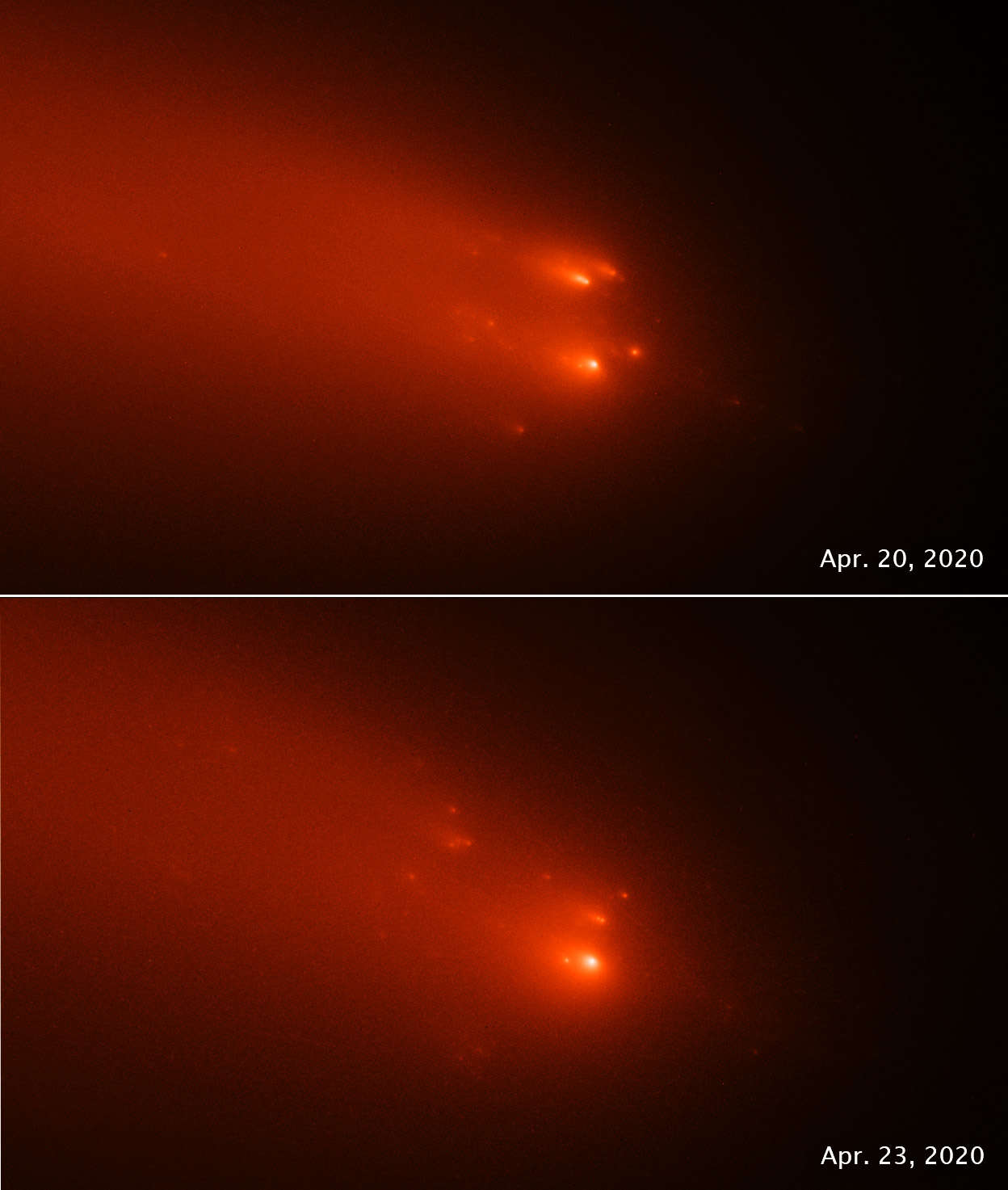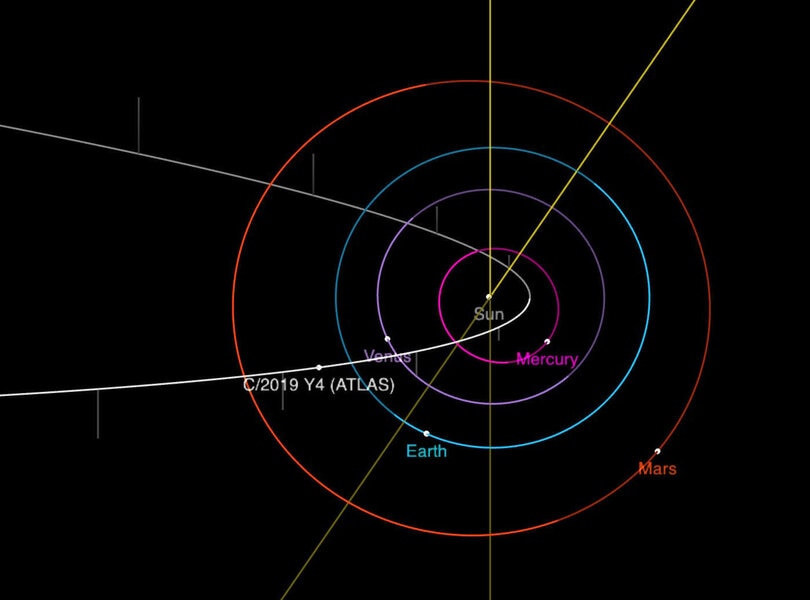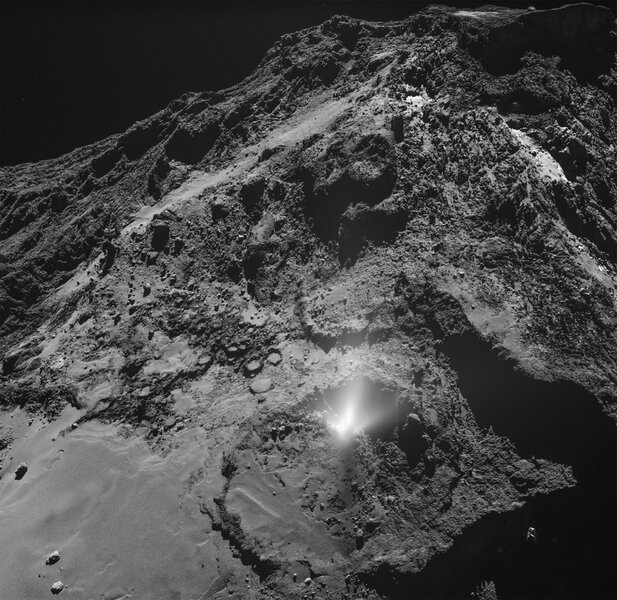Create a free profile to get unlimited access to exclusive videos, sweepstakes, and more!
Why did this comet disintegrate when its sibling was able to hold it together?

On December 28, 2019, a new comet was discovered by ATLAS (the Asteroid Terrestrial-impact Last Alert System). Called C/2019 Y4 (ATLAS) — let's call it 2019 Y4 for short — it had an orbit that brought it to within about 38 million kilometers of the Sun, which is inside Mercury's orbit. Pretty close to the Sun.
In February 2020 the comet brightened rapidly, raising hopes it might become naked eye visible, but about a month later it became clear the opposite was going to happen: 2019 Y4 was disintegrating, and didn't survive perihelion passage, when it got closest to the Sun.
In fact, the comet started breaking apart long before perihelion, when it was well over 200 million kilometers from the Sun, farther out even than Earth is. That was surprising. Now, we've seen comets disintegrate before. They're made of rock, dust, and ice, and when a comet gets near the Sun the ice turns to gas, forming the iconic fuzzy head and long tail. If enough ice does that the comet can break apart. However, that usually happens closer in to the Sun, and in this case the roughly 5,000-year-long orbit of 2019 Y4 implies it's been around the Sun before and survived. Why did it fall apart this time?
A new paper just published may have an explanation, or at least a partial one. Using ground-based and Hubble observations, astronomers looked at how the comet broke up and think it was once part of a larger comet that broke into two (or more) large pieces, one of which became 2019 Y4.
The other? It became a different comet called C/1844 Y1 (Great Comet), one that passed Earth in 1844 and was bright enough to easily see with the naked eye. That comet has an orbit extremely similar to that of 2019 Y4, indicating that they came from the same object.
Despite coming from the same parent, the two comets were very different. 1844 Y1 survived its pass close to the Sun and headed back out into the blackness of the outer solar system, while 2019 Y4 fell apart completely. Why did they behave so differently?
The proposed solution comes from the Hubble observations. The comet broke into several pieces just before Hubble took a look. The two brightest chunks, called A and B, were seen to actually be clusters of debris, some pieces as small as 10 meters across. Given their behavior — A was a smaller group with the pieces closer together — it seemed that Complex B was about two weeks old at the time of the observations, while Complex A was only a few days old.
Moreover, the fragments in Complex A completely disintegrated, while those in Complex B held together fairly well.
These clues indicated that the comet itself was likely nonhomogeneous, composed of different kinds of stuff (perhaps in some places there was more ice, and some more rock). The material that was more ice (Complex A) was more fragile, and fell apart completely, while the rockier part (B) held together somewhat better.
And that's interesting: If 2019 Y4 was non-uniform in structure, its parent comet must have been as well. That would explain how 2019 Y4 fell apart while 1844 Y1 did not. The latter was made of tougher stuff. The astronomers speculate that the parent body was roughly a kilometer wide, with ice beneath its surface. When it broke up, 1844 Y1 was from the stronger crust on the outside, while 2019 Y4 would've been from the more volatile material in the interior.
If that's so, then why didn't 2019 Y4 break up 5,000 years ago during that big split? Perhaps it happened when the comet had already passed the Sun, was weakened by its heat, and then broke apart when it was already pretty far from the Sun on its way out. At that distance the ice inside 2019 Y4 wasn't warm enough to turn to gas, so it survived… at least, until 2020.
What broke up 2019 Y4 then? Given the age difference between Complexes A and B it looks like the disintegration was either two events or one long slow one. Sometimes ice under the surface will vent out gas as it warms, and that can spin the comet up like a pinwheel. If it spins rapidly enough the centrifugal force can break it up, and then smaller pieces will also outgas and break apart. It's also possible there was one major event (when the comet brightened in February 2020) and then the smaller pieces started outgassing and breaking apart later.
I'll note that this might explain why the two big pieces from the unnamed parent comet passed Earth 175 years apart; outgassing can change the velocities of the comets enough that they separated while keeping the orbits similar, so they passed us at very different times.
Despite having observed thousands of comets, seeing some close up, and having a spacecraft orbit one for years, we still don't understand the internal structures of comets well. Some seem fairly stable while others are as delicate as spun sugar. And sometimes both kinds can come from the same parent body!
There's an old saying about comets, attributed to famed comet-discoverer David Levy, that goes, "Comets are like cats: they have tails, and they do what they want." If their interiors are as chunky and non-uniform as the breakup of 2019 Y4 indicate, then this difficult-to-predict behavior makes a lot more sense.





























